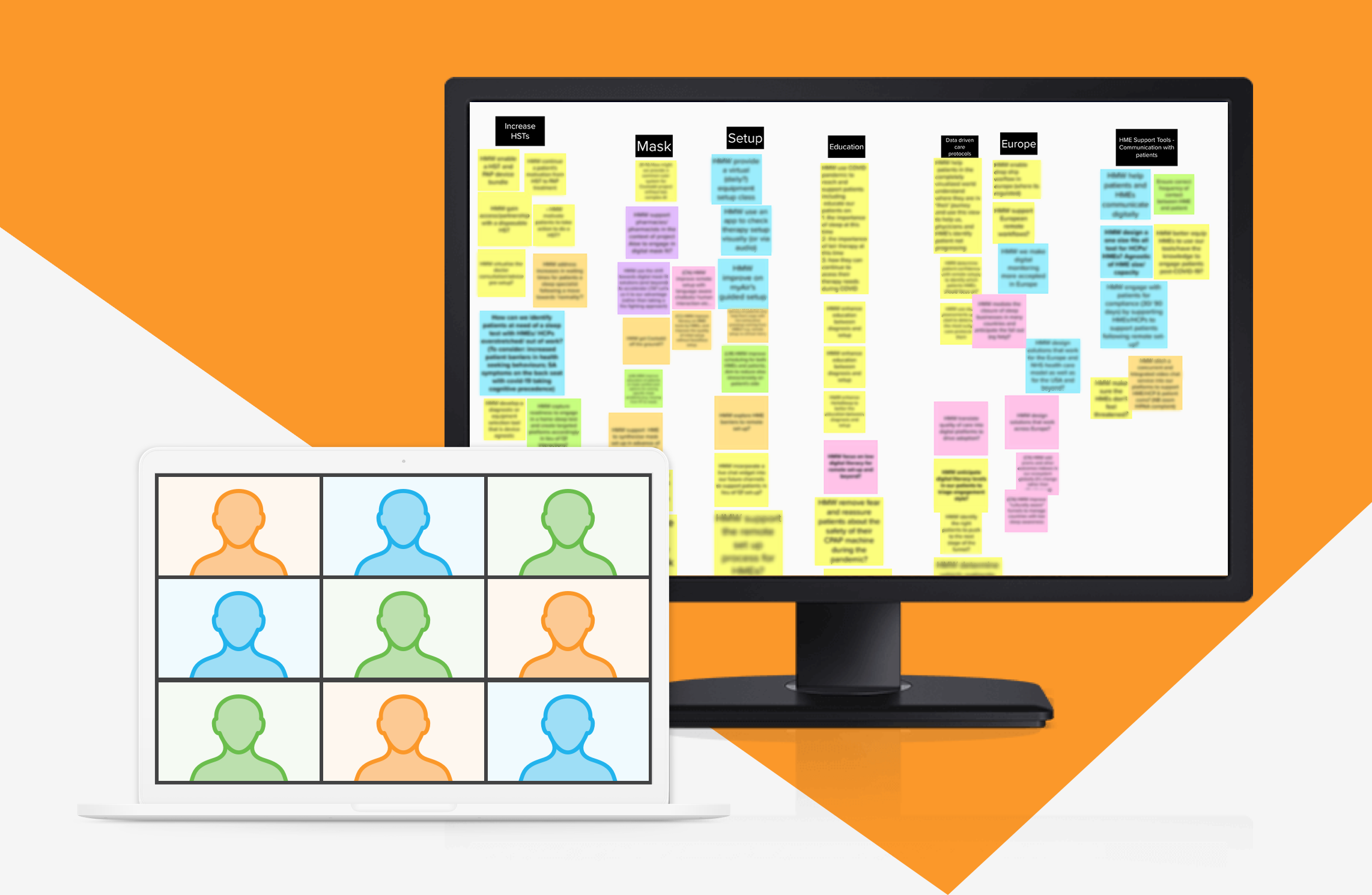
OVERVIEW
At ResMed, I planned and facilitated a week-long design sprint and multiple workshops. We went to develop many of the ideas that resulted from the workshops as full-fledged projects.
Below is a summary of stages and activities that I in corporate when planning for a workshop.
ROLES
Facilitator
TOOLS
Zoom
Mural
Miro
InVision
PREPARING WORKSHOP INPUTS
The key to a successful workshop is making sure that all participants start on the same page with as much context and understanding of the problem as possible. To that end, I coordinate with the relevant subject-matter experts to share their knowledge as a workshop input. I also include the voice of the customer in the form of previous relevant research, new customer interviews, and reflective records.
Subject-matter expert interviews and presentations
Previous and new patient interviews
Reflective records of past experiences
IDENTIFYING THE PROBLEM
Focusing on the right problem (and verifying that a problem does, in fact, exist) is essential before coming up with solutions, so at least half of the total workshop time is dedicated to identifying the problem.
As part of this stage, I lead participants to listen to the workshop inputs together, write How Might We questions, and determine a problem statement after discussion.
How Might We statements
Question Bursts
GENERATING INNOVATIVE SOLUTIONS
Ideation is the fun part of workshops, but sometimes creativity needs a nudge to get going. To push participants to explore more innovative solutions, I employ a variety of design sprint and idea generation techniques.
Lightning demos
Crazy Eights
Mash Ups
REMOTE WORKSHOP LEARNINGS
Workshops are best conducted in person, but sometimes (in the midst of a pandemic, for instance), you have no choice but to do them remotely. These adaptations have helped make remote workshops more effective and efficient:
1. Use break out rooms
Discussion in smaller groups of maximum 5 people means that everyone's voice is heard and decisions can be reached faster.
2. Make time for frequent breaks
Breaks are more important than ever with hours of screen time. A rule of thumb is to take a 5 minute break after a half hour or 10 minute break after an hour.
3. Share a timer for breaks
To make sure everyone knows how much break time is left and comes back to resume the workshop on time, open a count down timer and share your screen.
4. Record and share workshop inputs ahead of time
Let participants review workshop inputs on their own time, so that valuable workshop time can be put towards discussion.
5. Acknowledge time differences
Sometimes it's impossible to plan workshops at a good time for everyone. But acknowledging an early morning or late night helps build empathy within the group.









